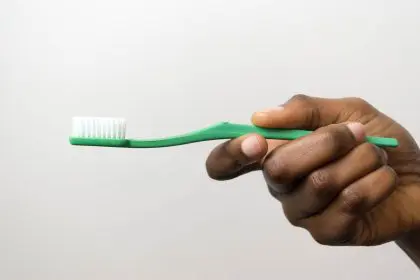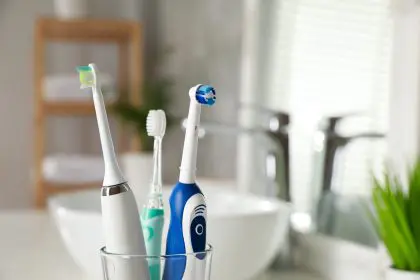The golden years should be filled with confidence and comfort, but for millions of older adults, persistent bad breath creates an embarrassing barrier to social interactions and intimate moments. This common yet distressing condition affects approximately 70 percent of adults over 65, transforming what should be carefree conversations into sources of anxiety and shame.
Bad breath, medically known as halitosis, becomes increasingly problematic as we age due to a complex interplay of physiological changes, medication effects, and evolving health conditions. Unlike the occasional morning breath experienced by younger individuals, older adults often face chronic breath issues that resist conventional solutions like mouthwash and mints.
Age-related changes transform mouth chemistry
The aging process fundamentally alters the oral environment in ways that promote breath-damaging bacteria. Saliva production naturally decreases with age, creating a condition called xerostomia or dry mouth. This reduction in saliva flow eliminates the mouth’s primary defense mechanism against harmful bacteria that produce sulfur compounds responsible for unpleasant odors.
Saliva serves multiple critical functions beyond simple moisture. It neutralizes acids produced by bacteria, washes away food particles, and contains antibacterial properties that maintain oral balance. When saliva production diminishes, bacteria flourish in the newly hospitable environment, multiplying rapidly and producing increasingly potent odor-causing compounds.
The composition of saliva also changes with age, becoming less effective at controlling bacterial growth even when present in normal quantities. These chemical alterations mean that even older adults without obvious dry mouth symptoms may experience bacterial overgrowth leading to persistent breath problems.
Taste perception changes that accompany aging can compound breath issues. Diminished taste sensitivity often leads to increased use of strongly flavored foods, spices, and seasonings that can contribute to breath odor. Additionally, reduced taste perception may mask the awareness of one’s own bad breath, allowing the problem to persist unaddressed.
Prescription medications create perfect storm conditions
The average older adult takes multiple prescription medications daily, and many of these drugs directly contribute to bad breath through various mechanisms. Over 400 commonly prescribed medications list dry mouth as a side effect, creating the bacterial-friendly environment that leads to halitosis.
Blood pressure medications, particularly diuretics and ACE inhibitors, significantly reduce saliva production. Antidepressants, especially tricyclic varieties and selective serotonin reuptake inhibitors, cause pronounced dry mouth in many users. Antihistamines, pain medications, muscle relaxants, and sleep aids all contribute to reduced saliva flow and subsequent breath problems.
Beyond causing dry mouth, some medications directly affect breath odor through their chemical composition. Certain heart medications, diabetes drugs, and chemotherapy treatments can create metallic or medicinal breath odors that persist regardless of oral hygiene efforts.
The timing and dosage of medications also influence breath quality. Multiple daily doses mean that medication-induced dry mouth persists throughout the day, providing little relief for natural saliva production to restore oral balance.
Dental health challenges multiply with time
Older adults face unique dental challenges that significantly impact breath quality. Receding gums, a common age-related condition, create deep pockets where bacteria accumulate beyond the reach of regular brushing and flossing. These bacterial hideouts produce concentrated odor compounds that resist surface-level cleaning efforts.
Existing dental work, including fillings, crowns, and bridges, can develop microscopic gaps over time where bacteria collect and multiply. These hard-to-clean areas become sources of persistent odor that worsen gradually as bacterial colonies establish themselves.
Tooth loss, whether partial or complete, alters the mouth’s architecture in ways that promote bacterial growth. Missing teeth create irregular surfaces and gaps that trap food particles and bacteria. Ill-fitting dentures compound these problems by creating additional spaces for bacterial accumulation while potentially causing mouth sores that harbor odor-producing microorganisms.
Gum disease, which affects nearly 70 percent of adults over 65, represents a major source of bad breath. The bacterial infection that characterizes periodontal disease produces particularly offensive sulfur compounds while creating inflamed tissue that provides additional hiding places for harmful microorganisms.
Medical conditions intensify breath problems
Several health conditions that become more common with age directly contribute to bad breath through various pathways. Diabetes affects breath quality through multiple mechanisms, including increased glucose levels in saliva that feed harmful bacteria and ketone production that creates distinctive breath odors.
Respiratory conditions such as chronic obstructive pulmonary disease, pneumonia, and bronchitis introduce infected material from the lungs into exhaled breath. Postnasal drip associated with sinusitis provides a constant source of protein-rich material that bacteria convert into odor-producing compounds.
Kidney disease creates breath odor through the accumulation of waste products that would normally be filtered from the blood. These compounds exit through the lungs, creating distinctive ammonia-like breath odors that resist local treatment.
Gastroesophageal reflux disease becomes more common with age and contributes to bad breath through stomach acid and partially digested food materials that reach the mouth. The acidic environment promotes bacterial growth while introducing food particles that serve as bacterial fuel.
Liver conditions affect breath through the accumulation of toxins normally processed by healthy liver tissue. These waste products create distinctive breath odors while altering the mouth’s chemical balance in ways that promote harmful bacterial growth.
Dietary factors compound age-related challenges
Nutritional needs and eating patterns change with age in ways that can worsen breath problems. Many older adults experience reduced appetite or difficulty chewing, leading to dietary choices that inadvertently promote bad breath. Soft foods that stick to teeth and gums provide ideal bacterial nutrition while being difficult to remove through normal oral hygiene.
Decreased fluid intake, whether due to reduced thirst sensation or concerns about bathroom frequency, contributes to dry mouth and concentrated bacterial growth. Dehydration makes existing breath problems worse while reducing the mouth’s natural cleaning mechanisms.
Dietary supplements commonly used by older adults can contribute to breath odor. Iron supplements, in particular, can create metallic breath odors while altering the oral bacterial balance. Multiple vitamin formulations and herbal supplements may interact to create distinctive breath characteristics.
Changes in meal timing and frequency also impact breath quality. Smaller, more frequent meals may mean constant food particles in the mouth, while longer periods between meals can lead to hunger-related breath changes and bacterial overgrowth.
Social isolation perpetuates the problem
Bad breath in older adults often creates a cycle of social withdrawal that prevents the problem from being addressed. Embarrassment about breath odor may lead to reduced social interaction, which decreases awareness of the problem’s severity while eliminating opportunities for tactful feedback from family and friends.
Living alone, increasingly common among older adults, means fewer people notice breath problems or provide gentle reminders about oral hygiene. Without social feedback, bad breath may worsen gradually without the individual realizing the extent of the problem.
Depression and social isolation can reduce motivation for self-care, including oral hygiene practices that become more critical with age. The emotional impact of chronic bad breath can create additional mental health challenges that further complicate treatment efforts.
Effective solutions restore confidence and comfort
Despite the complex factors contributing to bad breath in older adults, effective solutions exist that can dramatically improve breath quality and restore social confidence. The key lies in addressing multiple contributing factors simultaneously rather than relying on surface treatments alone.
Improving hydration represents the most immediate and effective intervention for many older adults. Sipping water throughout the day helps maintain saliva flow while washing away bacterial fuel. Sugar-free gum or lozenges can stimulate saliva production between meals, particularly varieties containing xylitol that actively fight harmful bacteria.
Enhanced oral hygiene techniques specifically designed for older adults can address many underlying causes. Gentle brushing with soft-bristled toothbrushes protects sensitive gum tissue while effectively removing bacterial buildup. Specialized mouthwashes designed for dry mouth can provide longer-lasting moisture and bacterial control than conventional products.
Regular professional dental care becomes increasingly important with age, as early intervention can prevent minor issues from becoming major sources of bad breath. Professional cleanings remove bacterial buildup from hard-to-reach areas while identifying potential problems before they worsen.
Working with healthcare providers to review medications may reveal opportunities to reduce dry mouth effects through timing adjustments, alternative formulations, or additional treatments to counteract medication-induced breath problems.
The journey toward fresher breath in later years requires patience and comprehensive attention to multiple contributing factors. With proper understanding and targeted interventions, older adults can overcome persistent bad breath and reclaim the confidence that makes social interactions enjoyable and fulfilling once again.















